
Electronic and Algorithmic Trading Technology: The Complete Guide
by
Kendall Kim
Published 31 May 2007
They also cannot conduct trades away from the current best market price and must allocate orders according to price priority. Decimal pricing decreased the volume of stocks that had been available at prices that were fractions of a dollar into smaller pools available at prices that differ by just a penny. Algorithmic trading has become a solution for the problem of smaller spreads and market fragmentation. Algorithmic programs have the ability to slice parent orders, which are large blocks of shares, efficiently, ensuring that each tiny order or child order gets the best price. The emergence of new niche players in the algorithmic market has created variety among market makers but does not seem to pose a serious threat to bigger Wall Street broker-dealers.
…
The elimination of Rule 390, besides boosting the activity of ECNs, also enables brokerdealers to keep more order flow in-house. These restrictions run contrary to the Security Exchange Act of 1934’s objectives of assuring fair competition among market centers and eliminating unnecessary burdens on the competition.2 The NYSE has defended Rule 390 on the basis that it was intended to address market fragmentation by promoting interaction of investor orders without the participation of a dealer; however, the rule also restricts competitive opportunities of ECNs, which use innovative technology that also offers investors a high degree of order interaction. In 2000, the NYSE launched NYSE Direct, an automated service system, which currently executes 10% of the exchange’s volume.
…
According to the NYSE’s Web site, the NYSE Hybrid Market is an innovative response to customer’s needs, which integrates into one platform the best aspects of both the auction market and automatic trading. Under the deal with Archipelago, which accounts for nearly 25% of NASDAQ’s trading volume, the NYSE is expected to enter 2 ‘‘NYSE Rulemaking: Notice of Extension of Comment Period for Issues Relating to Market Fragmentation,’’ Release No. 34-42723 (File No. SR-NYSE-99-48), May 2000, http://www. sec.gov/rules/sro/ny9948n2.htm. 44 Electronic and Algorithmic Trading Technology into derivatives and OTC trading is expected to become more competitive with NASDAQ. 4.4 Exchanges Scramble to Consolidate The recent merger activity with stock exchanges has been a result of new technologies automating trade process flow such as ECNs, and regulatory intervention such as the repeal of Rule 390.

Trading and Exchanges: Market Microstructure for Practitioners
by
Larry Harris
Published 2 Jan 2003
The two competitions therefore are inconsistent with each other. Any reasonable attempts to address competitive issues must consider why market fragmentation occurs, and the benefits and costs of market diversity. In this chapter, we consider the economic forces that cause markets to consolidate and to fragment. Our discussion starts with a short description of how technology has changed trading markets. This section presents the technological context of the main issues. The economic analysis starts with a discussion of why markets consolidate. We then consider why markets fragment, and how fragmented markets coalesce into segmented markets. Finally, we address the public policy problems related to externalities among market segments. 26.1 TRADING SYSTEMS AND TECHNOLOGY New trading systems have proliferated largely due to advances in communications and computing technologies.
…
But if the technology is slow because traders need time to arrange trades that they could not otherwise arrange, requiring fast linkages will disrupt the incumbent market and possibly destroy its valuable trading system. The decision to require fast linkages therefore is not merely a decision to promote competition; it can unintentionally impose an inferior market structure upon certain markets. 26.3 MARKET FRAGMENTATION Markets fragment because traders are not all identical and because their trading problems differ considerably. Some market structures therefore better serve the needs of some traders than other market structures do. Consequently, identical instruments—and very similar instruments—may simultaneously trade in multiple market centers.
…
It also helps explain why stocks generally do not trade well outside of their national markets. ◀ * * * 26.7 SUMMARY Markets consolidate because traders attract traders. Trading is easiest and cheapest where most traders of an instrument or similar instruments trade. Liquidity attracts liquidity. Markets fragment because the trading problems that traders solve, differ. Different market structures serve some traders better than others. Markets fragment when, for enough traders, benefits from differentiation exceed benefits from consolidation. Some traders are small and unconcerned about the price impacts of their trades, while other traders are large and very concerned about front running.

The Great Convergence: Information Technology and the New Globalization
by
Richard Baldwin
Published 14 Nov 2016
Gains from Greater Scale Economies Even in today’s globalized world, local market size matters. For a whole host of reasons ranging from standards and regulations to consumer preferences, firms are frequently dominant in their home market while being marginal players in foreign markets. This very common situation is known as market fragmentation. As it turns out, market fragmentation reduces competition, raises prices, and keeps too many firms in business. As a result, nations with small markets tend to have too many firms that are too small to be globally competitive. This is especially a problem in developing nations. Having lots of firms is not the problem, of course.
…
Index A7/global South/developing nations: agreements and, 240; BITs and, 103, 104, 104f; communication and, 124; comparative advantage and, 149, 217–218; deindustrialization and, 55–57; exports and, 151; global GDP, share of, 1820-1990, 48f; ICT revolution and, 8; income, U.S. vs., 59; industrialization and, 59, 60f, 61, 62t, 213–218; know-how and, 140–141; market fragmentation and, 184–185; New Globalization policies and, 98–105, 217–218; Old Globalization (first unbundling) and, 78; policies and, 279; premature deindustrialization and, 134; sectors sequencing and, 268–269; summary, 18–19, 25–26; tariffs and, 72f, 100–105, 100f; trade with developed nations, 161.
…
See also IT (Information Technology); moving ideas comparative (competitive) advantage: A7/developing nations and, 149, 217–218; cities as factories and, 234–235; defined, 179–180; denationalized, 145–154; Dyson and, 136; exports and, 147–148; finer-resolution and, 257; global value chains and, 145–146, 217–218, 242, 273–274; high/low tech/wages and, 216; industrialization, 254; market fragmentation and, 184–185; measures of, 201; Meiji Japan example, 183–184f; migrations and, 138; national perspective and, 175–176; New Globalization (second unbundling) and, 147–148, 170–171, 175, 179–185, 221–222, 225–228, 231, 240, 257–262, 260f; offshoring and, 135, 168; Old/New Globalization compared, 166f–168, 171–172, 176, 179–185; policies and, 240; production networks and, 278; as regional/national concept, 266; Ricardo and, 125–129, 128, 138–139, 196; services and, 232; smuggling example of, 179–183; staged development strategy and, 259; stickiness and, 229; workers and, 168–169.

High-Frequency Trading
by
David Easley
,
Marcos López de Prado
and
Maureen O'Hara
Published 28 Sep 2013
MiFID fostered greater competition among brokers, with the objective of improving liquidity, cohesion and depth in financial markets. It allowed new, highly technological competitors to enter the European markets, thereby introducing competition for what had been a relatively quiescent, exchange-dominated market structure. Similarly, Reg NMS encouraged competitiveness among exchanges by allowing market fragmentation. Reg NMS was wildly successful at this, as the market structure of 13 equity exchanges and 40 or more alternative venues (dark pools, dealer desks, etc) attests. Cohesion was supposedly ensured in the US through a mechanism for the consolidation of individual orders processed via multiple venues (the “National Best Bid and Offer” (NBBO)).1 These changes, combined with decimalisation of equity markets, resulted in an “arms race” to develop the technology and quantitative methods that could extract the last cent of profitability from trading while serving the demands of market participants.
…
URL: http://www.nanex.net/ 20100506/FlashCrashAnalysis_CompleteText.html. NANEX, 2011, “Strange Days June 8’th, 2011 – NatGas Algo”. URL: http://www.nanex .net/StrangeDays/06082011.html. O’Hara, M., 2010, “What Is a Quote?”, Journal of Trading 5(2), pp. 11–16. O’Hara, M., and M. Ye, 2011, “Is Market Fragmentation Harming Market Quality?”, Journal of Financial Economics 100(3), pp. 459–74. Patterson, S., and A. Ackerman, 2012, “SEC May Ticket Speeding Traders”, Wall Street Journal, February 23. US Securities and Exchange Commission, 2010, “Testimony Concerning the Severe Market Disruption on May 6, 2010”, May 11.
…
Ruebel, 2013, “A Big Data Approach to Analyzing Market Volatility”, Working Paper, http://ssrn.com/abstract=2274991. 142 i i i i i i “Easley” — 2013/10/8 — 11:31 — page 143 — #163 i i 7 Liquidity and Toxicity Contagion David Easley; Marcos López de Prado; Maureen O’Hara Cornell University; RCC at Harvard University; Cornell University Legislative changes in the US (Regulation National Market System (Reg NMS)) of 2005 and Europe (Markets in Financial Instruments Directive (MiFID), in force since November 2007), preceded by substantial technological advances in computation and communication, have revolutionised the financial markets. MiFID fosters greater competition among brokers, with the objective of improving liquidity, cohesion and depth in financial markets. Similarly, Reg NMS encourages competitiveness among exchanges by allowing market fragmentation. Cohesion across markets is recovered through a mechanism for the consolidation of individual orders processed in multiple venues into a single best bid or offer price for the market as a whole (the National Best Bid and Offer (NBBO)). Since the arrival of trading in multiple markets, an “arms race” has developed for the technology and quantitative methods that can squeeze out the last cent of profitability when serving the demands of market participants, hence the advent of high-frequency trading.

Nerds on Wall Street: Math, Machines and Wired Markets
by
David J. Leinweber
Published 31 Dec 2008
Larger firms, willing to risk some capital by incurring the risk of overbuying (or overselling), will be able to allow their clients to make use of more aggressive trading tactics. Multiple market fragments can be seen as providing a service to different classes of traders seeking liquidity, thus making markets overall more efficient, resilient, and robust—all good things. But in a complex, multiple-fragment market it is possible to shift from effective trading to gaming in a mix of different market structures. Some market fragments have price discovery, whereas others use prices derived from other fragments. When an algo finds that a price can be set in one fragment using a small order to create advantage for a larger trade in another fragment, that is an example of gaming the system.
…
The microstructure tactics based on these cost-minimizing trading models are also deployed in VWAP and similar applications. These anticipate volume, and try to participate throughout the day (or time period), optimizing to those targets. Models Aren’t Markets Even the most elegant models are abstractions of real markets. The real thing is a rapidly changing mélange of market fragments, continuous and call markets, ECNs, innovative matching systems, indications, and dark liquidity pools. Limit order books just aren’t what they used to be. In the days of eighths and of orders being modified by people, the inside quote * Market color can be defined as the mood and general sense among traders.
…
All rights reserved. incomprehensible blur. Rates of cancels and replacement of limit orders can be overlaid to turn the flood of data into useful information. Layers on the limit order book show grouped sizes at each price. Customized versions of the Visible Marketplace display can include multiple market fragments, but only one is shown in this example. As with all of these graphics, the dynamics and drill-down-to-details ability are content-rich aspects that don’t translate well to the printed page.24 If you are skillful and lucky, these market analytics will help you catch events before they are over.
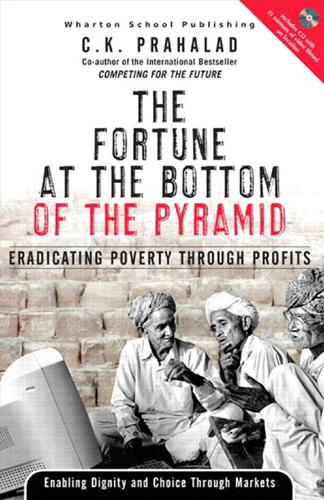
The fortune at the bottom of the pyramid
by
C. K. Prahalad
Published 15 Jan 2005
Although the long-term retention is unknown, the immediate recollection of the advertisement’s message was about 90 percent. In the future, Annapurna’s advertising will be tracked more carefully. An advanced tracking process (ATP) is typically used four times per year on established brands and was to be used for the first time on Knorr-Annapurna salt after the 2003 launch. Market Fragmentation Annapurna team members all share valuable insights into the challenges the salt market presents to the brand. 188 The Fortune at the Bottom of the Pyramid Zarius Master, a regional sales manager for HLL, said: Everyone must consume some form of salt (therefore salt itself has 100 percent penetration); however, this makes the channels even more complex.
…
S., 219 Acquired Immune Deficiency Syndrome (AIDS), 361 Adatiyas, 324–325 Advanced tracking process (ATP), 186 Aid agencies, 3, 9 Ala, 52 Alerta disease surveillance system (Peru), 364 Amancio, Celso, 126 Amul cooperative, 19, 31–32, 38, 46, 64, 108 Amway, 44 Andhra Pradesh e-governance story, 85–89 impediments to, 93–94 lessons from, 94–95 Annamalai, Kuttayan, 357, 385 Annapurna Salt, 171–206 advertising, 187 brand creation, 182 competitors, 179–181 Dandi Salt, 180 Tata Salt Ltd., 180 evolution of, 183–184 Hindustan Lever Research Center, 184 and HLRC, 184–185 innovation, 172 iodine deficiency disorder (IDD), 171 manufacturing and distribution, 189–192 market fragmentation, 187–188 market share, 188–189 market strategy, 187–189 message-driven beans, 187 product line and pricing, 186 retail price schemes, 192 salt target market, 185 transport, 190–192 innovations in, 191–192 Aravind Eye Care System, 29, 37–38, 242, 265–288 Aravind Center for Women, Children, and Community Health (ACWCCH), 283 Aravind Medical Research Foundation, 283 Aravind Postgraduate Institute of Ophthalmology, 284 Aurolab, 280–282 financial self-sustainability, 268–269 future of, 284–285 history of, 265–266 innovation, 265 LAICO, 282–283 mission, 267–268 organization of, 266–268 recruitment/training, 270–274 Rotary Aravind International Eye Bank, 283 Aravind Eye Hospital, 45, 266 capital intensity, 56 community outreach programs, 278–280 community-based rehabilitation project, 279 eye camps, 278–279 389 The Fortune at the Bottom of the Pyramid 390 Aravind Eye Hospital, continued eye screening of school children, 279 refraction camps, 279–280 composition of staff strength in, 267 eworld-class delivery system, development of, 53 Fellowship program, 271–272 IT kiosks for teleadvice, use of, 280 outpatient departments, 274–275 surgical wards, 276–278 workflow, 274–278 Aravind Medical Research Foundation, 283 Arbitrage restrictions, 329 Arogya (Health) Day, 199 Automatic Milk Collection System Units (AMCUS), 31 Automotive/two-wheeler manufacturers, and BOP customers, 57 Avon, 44, 108 B Balakrishnan, Dr., 281 Balasubramanian, A., 193 Balu, Rehka, 172–173 Banga, M.
…
S., 44, 51, 221–222 Banga, Vindi, 193 Bank of Madura, 44, 72–73 history of, 298–301 ICICI Bank merger with, 301–302 lending, 74–75 and maturation of SHGs, 73 merger with ICICI, 74 Rural Development Initiative, 299–301 SHG model, 299–301 Bank-Netherlands Water Partnership, 217 Baron, Scott, 386 Barros, Allan, 125, 131 Bartira, 131 Behavior changes methodology, 226 Below-knee prosthetic products, 251–252 Ben & Jerry’s Ice Cream, 364 Bhagwan Mahaveer Viklang Sahayata Samiti, See BMVSS Big, 122 Bimbo bakery, 21, 116 Biometric authentication systems, 57 BMVSS, 244, 256–259 camp system, 261–262 collaboration with Indian Space Research Organization (ISRO), 263 new locations, 262 BOP (bottom of the pyramid): active engagement of private enterprises at, 5 Andhra Pradesh e-governance experiment, 85–89 impediments to, 93–94 lessons from, 94–95 building governance capabilities among the poor, 72–76 Center for Good Governance (CGG), 90–93 guiding principles, 91 and characteristics of market economy, 5 economic value creation at, 56 encouraging consumption and choice at, 10–12 engaging, 48–49 eSeva, 89–90 as global opportunity, 47–62 lack of money at, 10–12 learning from, 49 local growth opportunities, 50–51 learning to grow, 50–52 local innovations and global opportunity, 52–53 market development at, 2 philosophy for developing products and services for, 24–25 products/services for, 23–46 transaction governance capacity (TGC), 81–83 building, 83–85 components of, 84 degrees of, 81 BOP consumers: ability to adapt/resilience of, 108–109 and advanced technology, 15–16 cost disparities between the rich and, 11–12 and risk, 12 upgrade, 105–106 BOP markets: access to, 12–13 access to financial services, 29–30 brand-consciousness of, 13–14 business design criteria, 30 connectedness of, 14–15 delivery of products/services, 45–46 developed markets compared to, 34–37 and firms’ challenge of cost perspectives, 9 Index 391 large, 50 and multinational corporations (MNCs), 5 nature of, 10–16 as new growth opportunity for private sector, 6 NGOs as lead experimenters in, 32 and the private sector, 6 sustainable development, 33–34 twelve principles of innovation for, 25–26 Brazil: retail banks in, 125–126 stratification breakdown, 119 C Cadbury, 15 Cairncross, Sandy, 209 Canara Bank, 297 Capital intensity, and BOP markets, 55–57 Captain Cook, 198 Cargil, and salt market, 180 Carné (passbook), Casas Bahia, 126 Carrefour, 122 Casas Bahia, 14, 107, 115–146 appliance sales, 17 average finance term, 123 business model and positioning, 122–144 carné (passbook), 126 cash management, 130 competitive landscape, 121–122 consumer education process, 127–128 contracts, 141 credit analyst training, 128–130 cross-selling, 122 culture, 124–125 culture and philosophy, importance to, 118–119 customer experience, maximizing, 140 customers, 118 typical, 119–121 default rate at, 17 delivery drivers, 133 delivery process, 134 description of, 115 distribution, 132–133 distribution centers, 133 employee retention, focus on, 133 evaluation of prospective clients, 126–127 expansion, 145 finance, 125–144 furniture sales, 19, 131 default rate for, 127 future of, challenges, 144–145 history of, 115 human resources management, 142–144 identity cards, 107 infrastructure, investments in, 140 management style, 122–125 marketing, 135–137 opportunity, scope and size of, 119 preferred-client card, 137 product design, 131–132 production schedule, 132 products, 131 promotions, 136 purchasing power, 131 rejection of credit, 130, 141 retail landscape, 121–122 role of, 126–128 salespersons: compensation for, 143 training, 135 stores/storefronts, 134–135 supplier negotiation process, 132 technology, 137–140 example of, 138–139 future of, 142 history with IBM/Linux, 139–140 IT backbone, 141 ongoing IT projects, 141–142 revenues spent on, 140 television advertising, 136 third-party purchase at, 130 training, 128–130, 135 trust, 21 Casas, Cynthia, 388 CASHPOR, 313 Cataract surgery, and commitment to quality in BOP markets, 29 CEMEX, 17–18, 46, 106, 108, 147–168 Construmex, 164–168 business idea, evolution of, 164–167 business model, 165–166 Construmex Mexico, 167 distributors in Mexico, 167 Dolex USA, 167 international growth, 167 purpose of, 165 sales representatives, functions of, 165–167 description of, 115–116 history of, 147–148 392 CEMEX, continued initial market research (Guadalajara, Mexico), 152–153 innovation, 147 kiosks/construramas, 149 low-income population, converting into customers, 149 market eye-openers, 152–153 Mexican society, 150–152 housing, 152 savings, 150–151 women and entrepreneurism, 151–152 Mexico, 148 Patrimonio Hoy project, 40, 148–150 cell setup, 153–154 challenges, 163 costs, 159 customer enrollment, 154 distribution, 161 key lessons from, 164 marketing, 159–160 material distribution/delivery, 155–156 offices/cells, identification of, 153 operating model, 159–162 program design, 153–156 promotion, 161 revenues, 159 risk management, 161–162 savings-credit payment cycle, 154–155 socios/partners, 154 strategic importance of, 152–153 value to distributors, 158 value to promoters, 156–157 value to socios/partners, 157–158 value to suppliers, 158 products, 147 value analysis, 156–158 Center for Good Governance (CGG), 90–93, 99 guiding principles, 91 Centers for Disease Control (CDC), 39, 45, 54 Chandra, Ram, 34–37, 250, 262 Chandran, Sudha, 243 China, contract governance, 80 Choupal, defined, 335 Citicorp, 30 Civil society organizations, 3 Cohen, Ben, 364 Colgate-Palmolive, 198, 214, 216, 219 The Fortune at the Bottom of the Pyramid Communication barriers, breaking down, 102–105 Conagra, and salt market, 180 Confederation of Indian Industries (CII), 80 Connectedness, of BOP market, 14–15 Construmex, 164–168 business idea, evolution of, 164–167 business model, 165–166 Construmex Mexico, 167 distributors in Mexico, 167 Dolex USA, 167 international growth, 167 purpose of, 165 sales representatives, functions of, 165–167 Contracts: learning the sanctity of, 68–69 reducing inequities in, 69–72 Coordinators, SHGs, 302 Corporate social responsibility (CSR) initiatives, 6 Corruption, 95 as market mechanism for privilege access, 84 reducing, 77–98 Costs of managing, 58–61 Creating the capacity to consume, 16–19 “Three As”, 18 Cross-selling, Casas Bahia, 122 Curtis, Valerie, 209, 216 D Dadiseth, Keki, 231 Dandi Salt, 180 Data mining, 349 Data warehousing, 349 De Soto, Hernando, 78–84, 107 Delivery of products/services, 45–46 Department of Defense, 45 Deskilling work, 26 Developed markets, BOP solutions for, 53–54 Development, as social transformation, 99–112 Developmental assistance, assumptions at core of, 78 Dhall, Sharat, 193–194, 196, 198–199, 202 DHAN Foundation, 313 Dhawan, Vishal, 181, 184, 188 Index 393 Dialogue, access, risk benefits, and transparency (DART), 105, 109 Diarrheal disease, 208–209 behavior change, need for, 209–211 causes of, 208–209 handwashing as preventive measure, 209 public health issue in private realm, 210–211 Disease surveillance and response, ingredients of an effective system of, 362 Distribution, 43–44 Casas Bahia, 132–133 “Do-it-yourself” business focused on the BOP market, 17 Dolex USA, 167 Dominant logic: influence of, 9 of MNCs as it relates to BOP, 9 power of, 6–10 of public policy makers in India, changes in, 8 Donor nations, 3 Dorsiflexion, 248–249 Duarte, Gilberto, 132–133 Duggal, Bikram, 292 Dumas, Jean-Baptiste, 173 E E+Co, 45, 360 East India Company, 6 Economic pyramid, 4 E-governance, 87 Egypt, trapped resources of, 79 EID Parry Agriline, 43–44, 106, 288, 292 Elektra (Mexico), 14, 43, 57, 116 Entrepreneurism, in Mexican society, 151–152 Escort Hospital, 242 eSeva, 89–90, 107 list of services, 97–98 Extra, 122 F Fast-moving consumer goods (FMCG) industry (India), 66–68 Favela, defined, 120 Fernandes, Jose Roberto, 143 Financeiras, 125 Fingerprint recognition systems, 57 Foguel, Sami, 385 Food and Drug Administration (FDA), 45 Foreign direct investment (FDI), 64 Formal and informal market segments, comparison of, 151 Furniture sales: Casas Bahia, 19, 131 default rate for, 127 G Gillette, 214 Global Public-Private Partnership for Handwashing with Soap, 215–220, 235 Godowns, 189 Godrej Soaps, 215 Gopal Mishra, 192 Grameen Bank (Bangladesh), 64, 108, 299 default rate at, 21 development of microfinance in Bangladesh, 52–53 Grameen Phone (Bangladesh), 14 Graves’ disease, 174 Green, David, 280 H Habib’s, 65, 116 Handwashing, and diarrheal diseases, 208–209, 215–220 Hashimoto’s thyroiditis, 174 HDFC, 297 Hindustan Lever Limited (HLL), 172–173 See also HLL subsidiary, Unilever Hindustan Vanaspati Manufacturing Company, 181 HLL subsidiary, Unilever, 46, 63, 67–68, 169–170 ability to reach the masses, 212–213 Annapurna salt: advertising, 187 manufacturing and distribution, 189–192 market fragmentation, 187–188 market share, 188–189 market strategy, 187–189 message-driven beans, 187 product line and pricing, 186 394 HLL subsidiary, continued retail price schemes, 192 salt target market, 185 transport, 190–192 company profile, 181–185 corporate vision, 181 entry into branded staples, 181–182 financial performance, 213 gain from marketing public health messages about soap, 229–231 Gandhidam factory, 189–190 history of, 211 increasing market sales, methods for, 231–234 developing expertise to sell health, 234–235 impact on behavior change/soap sales, 234 scalability, 231–234 as largest Indian soap manufacturer, 211–212 as a nodal form, 68 Popular Foods division, 181 production costs, 190 Project Shakti at Hindustan Lever Ltd.
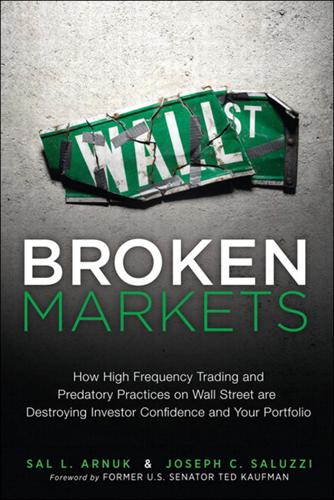
Broken Markets: How High Frequency Trading and Predatory Practices on Wall Street Are Destroying Investor Confidence and Your Portfolio
by
Sal Arnuk
and
Joseph Saluzzi
Published 21 May 2012
In December 2010, SEC Chair Mary Schapiro testified before Congress that the Commission was looking into “abusive colocation and data latency arbitrage activity in potential violation of Regulation NMS.”13 At the close of 2011, however, there had been no action on this subject, and the SEC’s own 2009 Dark Pool Proposal is still sitting in limbo. Today we have more than 40 pools adding to market fragmentation, where the majority of them feed/benefit proprietary trading as their predominant intention. Although institutions initially made a conscious choice to participate in dark pools as a way to limit market impact, today they mostly participate by default because the algorithms they use to divide up their orders and execute in small pieces throughout the day automatically pass though most of them.
…
Although the brokerage firm tells its institutional customers that its SOR is choosing destinations in a “smart” way—ostensibly to get each child order “best execution”—SORs are more typically optimized to benefit the cost structure and prop trading interests of the brokers. According to a study conducted by Woodbine Associates, a capital markets research and advisory firm, suboptimal order routing decisions cost institutional investors as much as $4.5 billion per year.2 We frequently appear at industry conferences to speak on topics ranging from market fragmentation to conflicts of interest built into our market structure. In November 2011, Sal spoke at one such panel in New York City on the topic of SOR. Buy Side Technology, an industry publication, reported on the event in a story titled “Smart Order Routing: Dancing with the Devil.”3 The article’s author, Jake Thomases, recounted the back and forth between Sal and fellow panelist, Val Shlivko, an executive at Nomura Securities.
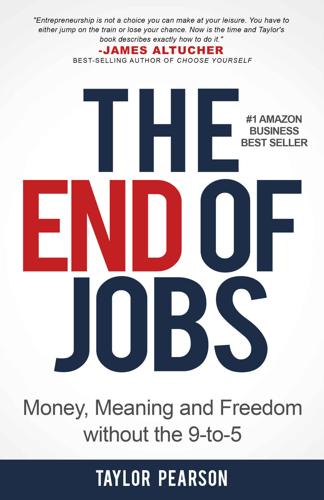
The End of Jobs: Money, Meaning and Freedom Without the 9-To-5
by
Taylor Pearson
Published 27 Jun 2015
Entrepreneurship expands your power to design your life. You are a part of the first generation that has radical access to the tools of production. Rather than choosing from a set of options, you can design our own. The internet and technology have revealed the power of the Long Tail. As major markets fragment into smaller and smaller markets, there’s more opportunities. The democratization of production and distribution means it’s easier than ever to take advantage them and design your own reality. Social scripts like stair stepping and apprenticeships make it possible to invest in entrepreneurship and become more entrepreneurial have been created that didn’t exist a decade ago.
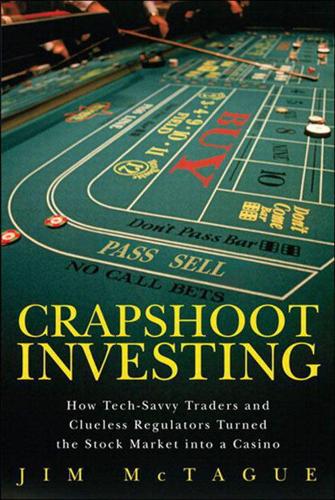
Crapshoot Investing: How Tech-Savvy Traders and Clueless Regulators Turned the Stock Market Into a Casino
by
Jim McTague
Published 1 Mar 2011
The SEC’s approach to shaping the market would be heavy handed, with layer upon layer of complicating rules. Had Moss lived to see it, he would have regretted giving the SEC such a free hand. The other goof was that the act granted entirely too many concessions to the NYSE, codifying a system of specialists in a way that would result in market fragmentation, not the intended, integrated national market system. “The dealer problem has been aggravated by the fact that many specialists have neither the capital nor the inclination to handle effectively the large orders that come in from institutions, and thus this function has gravitated to large, well-capitalized firms who combined the broker and the dealer function by finding the other side for these orders to the extent possible, positioning the balance if necessary, noted SEC Commissioner Philip A.

API Marketplace Engineering: Design, Build, and Run a Platform for External Developers
by
Rennay Dorasamy
Published 2 Dec 2021
For insurance, customer data sourced from the incumbent service provider can be used to identify personalized and best priced insurtech products, while in alternative lending, historical transactional data can be used for more reliable credit scoring and affordability analysis. It has the potential to transform the way consumers and businesses use financial services. There are many lessons from the Open Banking journey which can be used to make Open Finance a success: Standardization : Standardized access to data is key to avoid market fragmentation. In the way power supplies and electrical sockets are consistent in a country, providing a standard API definition will allow third parties to focus on providing value to the customer rather than on the different nuances of each service provider. A rule-based approach for data sharing – as with Open Banking in the UK – may be preferable to the principle-based approach applied in PSD2.
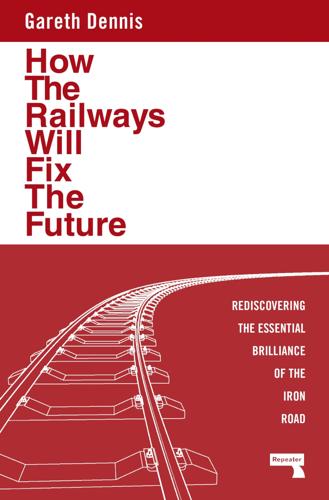
How the Railways Will Fix the Future: Rediscovering the Essential Brilliance of the Iron Road
by
Gareth Dennis
Published 12 Nov 2024
It was formed in the aftermath of German reunification and consists of various functional subsidiaries, which are in turn split into further subsidiaries, and indeed some of these are split into further subsidiaries again. In what you may notice is an emerging pattern in the mature European markets, fragmentation is being reversed, with what had been two separate infrastructure operators (DB Netz and DB Station&Service) merged into a single infrastructure manager — DB InfraGO — in late 2023. In parallel with a wide-ranging €45bn investment plan to bring Germany’s core routes up to scratch by 2030, this is in response to the biggest problem with Germany’s railways: a lack of investment in the infrastructure.

Prisoners of Geography: Ten Maps That Explain Everything About the World (Politics of Place)
by
Tim Marshall
Published 10 Oct 2016
Germans know instinctively that if the Union fragments, the old fears of Germany will reappear, especially as it is now by far the most populous and wealthy European nation, with 80 million inhabitants and the world’s fourth-biggest economy. A failed Union would also harm Germany economically: the world’s third-largest exporter of goods does not want to see its closest market fragment into protectionism. This is why in the summer of 2015, after the fractious debate over Greece, Germany led the discussion about whether the eurozone countries should form a genuine fiscal union. This will require a level of pooling of sovereignty hitherto unseen in Europe, with a shared budget between member states.
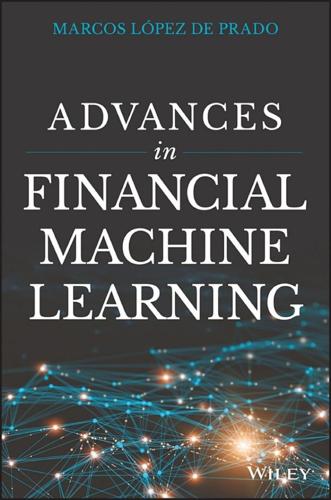
Advances in Financial Machine Learning
by
Marcos Lopez de Prado
Published 2 Feb 2018
Based on recommendations from a group of institutional investors, regulators, and academics, we implemented two sets of indicators that have been shown to have “early warning” properties preceding the Flash Crash. They are the Volume Synchronized Probability of Informed Trading (VPIN) (Easley, Lopez de Prado, and O'Hara [2011]) and a variant of the Herfindahl-Hirschman Index (HHI) (Hirschman [1980]) of market fragmentation. We implemented these two algorithms in the C++ language, while using MPI for inter-processor communication, to take full advantage of the HPC systems. The reasoning behind this choice is that if any of these earlier warning indicators is shown to be successful, the high-performance implementation would allow us to extract the warning signals as early as possible so there might be time to take corrective actions.
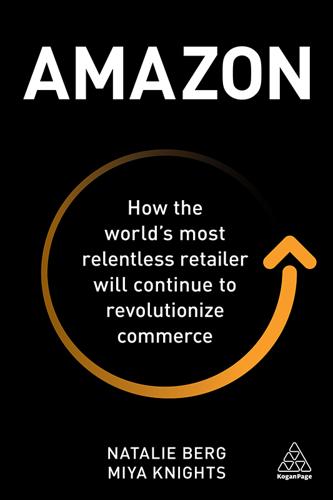
Amazon: How the World’s Most Relentless Retailer Will Continue to Revolutionize Commerce
by
Natalie Berg
and
Miya Knights
Published 28 Jan 2019
But this sameness of their merchandise, in stores that look like twins, provides the opportunity for different merchandise in stores that look different, individual, with a character of their own.4 Lebow was well ahead of his time: it would take over half a century for his advice to take hold. Private label in the US grocery sector has historically been slow to catch on due to a combination of market fragmentation and, up until relatively recently, the lack of grocery discounter presence. You only need to look across the Atlantic to see the opportunity for private label when a market is highly concentrated and swarming with Aldi and Lidl stores; in the UK and Switzerland, for example, own label can account for half of all grocery sales.
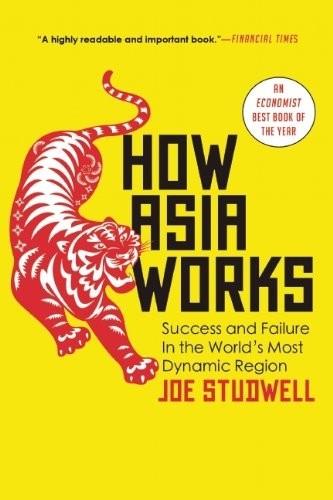
How Asia Works
by
Joe Studwell
Published 1 Jul 2013
China appears, in the aggregate, to be doing better with its state-owned enterprises. Out of the country’s history of socialist industrial planning, and Zhu Rongji’s 1990s rationalisation programme, there has developed a roster of substantial mid-stream businesses that are becoming increasingly globally competitive. These public firms are protected from undue market fragmentation by high capital barriers to entry, yet there are enough of them in each industrial segment to make for fierce competition.29 They indicate that export discipline, and domestic competition combined with the steady culling of losers, are more important than ownership in determining industrial development success.

The Shifts and the Shocks: What We've Learned--And Have Still to Learn--From the Financial Crisis
by
Martin Wolf
Published 24 Nov 2015
This is ‘debt deflation’ – a condition in which debtors are forced to save an ever higher share of their incomes in order to pay down debt, because the latter’s real value is rising over time. The more countries struggle to restore competitiveness and the weaker their growth, the worse the debt trap into which they will fall. As the IMF’s 2013 report on the Eurozone underlines, ‘Persistent financial market fragmentation, weak bank balance sheets, low demand, and creeping uncertainty, as well as structural weaknesses, all reinforce each other and contribute to the contraction of real activity.’34 Not least, a financial crisis starves businesses, on which growth depends, of the credit they need to finance investment.

Lonely Planet Mongolia (Travel Guide)
by
Lonely Planet
,
Trent Holden
,
Adam Karlin
,
Michael Kohn
,
Adam Skolnick
and
Thomas O'Malley
Published 1 Jul 2018
Seoul HotelHOTEL$$$ ( MAP GOOGLE MAP ; %7044 2754, 9144 6677; What3words: pebbly.indecorous.disbanded; d from T110,000; iW) Smart, friendly and well-equipped, this is among the best choices in town, which is why it's frequently fully booked. Some staff speak English, all rooms have attached bathrooms, and breakfast is included. There's a restaurant, cafe and clothing boutique on the property, as well. 5Eating Baruun BusMARKET$ ( MAP GOOGLE MAP ; What3words: screened.cunningly.curtail; h10am-8pm) This cavernous market, fragmented into stalls, offers the best produce selection in town, which makes it a good place to stock up on self-catering supplies. It's located just south of the Black Market ( MAP GOOGLE MAP ). oUran KhairkhanMONGOLIAN$ ( MAP GOOGLE MAP ; What3words: reference.empire.shameful; mains T5000-8500; h9am-8pm) Enter through the ramshackle side entrance into jovial Uran Khairkhan, an atmospheric brick house with cosy booth dining.

Order Without Design: How Markets Shape Cities
by
Alain Bertaud
Published 9 Nov 2018
When this happens, workers have fewer choices among the potential jobs available in a city, and firms have fewer choices when recruiting workers. In these conditions, metropolitan labor markets tend to fragment into smaller, less productive ones; salaries tend to decrease, while consumer prices increase because of lack of competition. In practical terms, labor market fragmentation means that a worker might not find the job for which she is qualified, because she cannot commute in less than 1 hour to the firm who could employ her. Conversely, the firm looking for a worker with specialized knowledge cannot find him because he cannot reach the firm in less than a 1-hour commute.
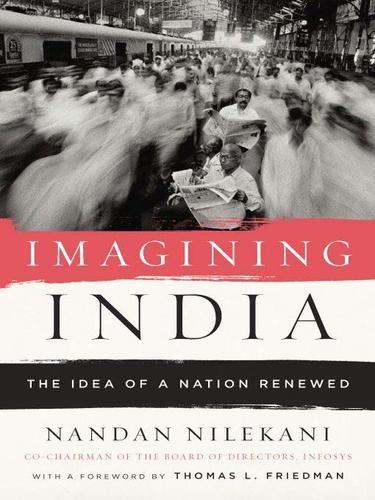
Imagining India
by
Nandan Nilekani
Published 25 Nov 2008
The government also made a variety of concessions to local powers and players, which impoverished it and fragmented markets even further—for instance, as the Congress found widespread support among the agrarian elite and the midsize and local landowners, the government refrained from taxing these groups at a time when agriculture contributed to 50 percent of India’s economy.7 The feudal systems also kept these markets fragmented—landowners maintained their power over local communities and small farmers, which hindered rural areas from getting information from and access to outside markets. Demands to impose new limitations on market links became a lobbying cause—pesticide distributors, for example, could successfully plead to the government to prevent farmers from directly contracting purchases with manufacturers.

The Rise and Fall of American Growth: The U.S. Standard of Living Since the Civil War (The Princeton Economic History of the Western World)
by
Robert J. Gordon
Published 12 Jan 2016
Female tastes shifted from dresses to separate tops and bottoms, and women revolted from the ups and downs of hemlines by shifting from skirts to pants and pantsuits. Likewise, men wore formal suits less often and separate jackets and trousers more often. Hats for women gradually disappeared, as they had for men a decade or two earlier. The market fragmented with clothing that differed by age group and lifestyle, but the continued trend toward casual clothing created a more uniform look for men based on the universality of khaki and blue denim pants. Men began to switch from shirts with buttons to polo shirts and turtlenecks. For women, the casual trend eroded the differences between daytime and evening wear, and as more women joined the labor force, they favored clothing that they could wear to work and then out at night without changing.